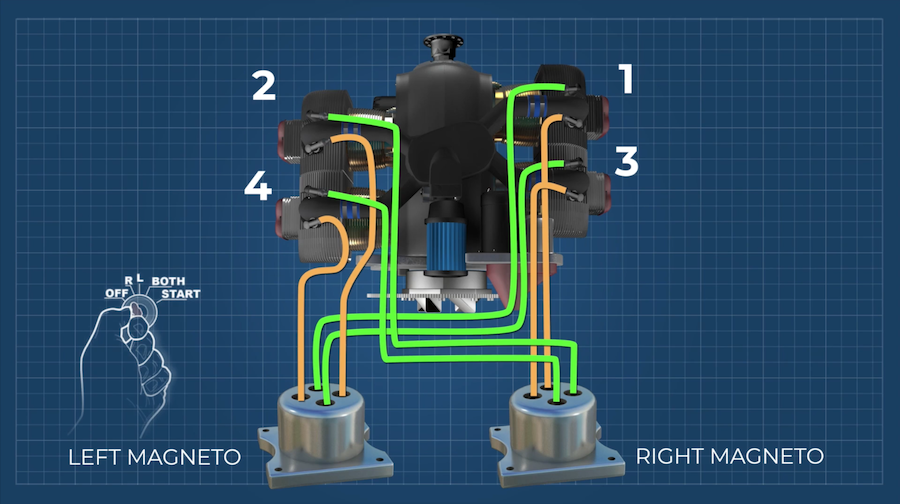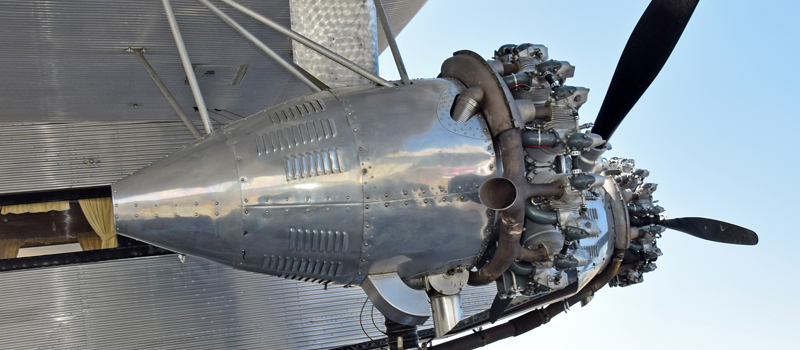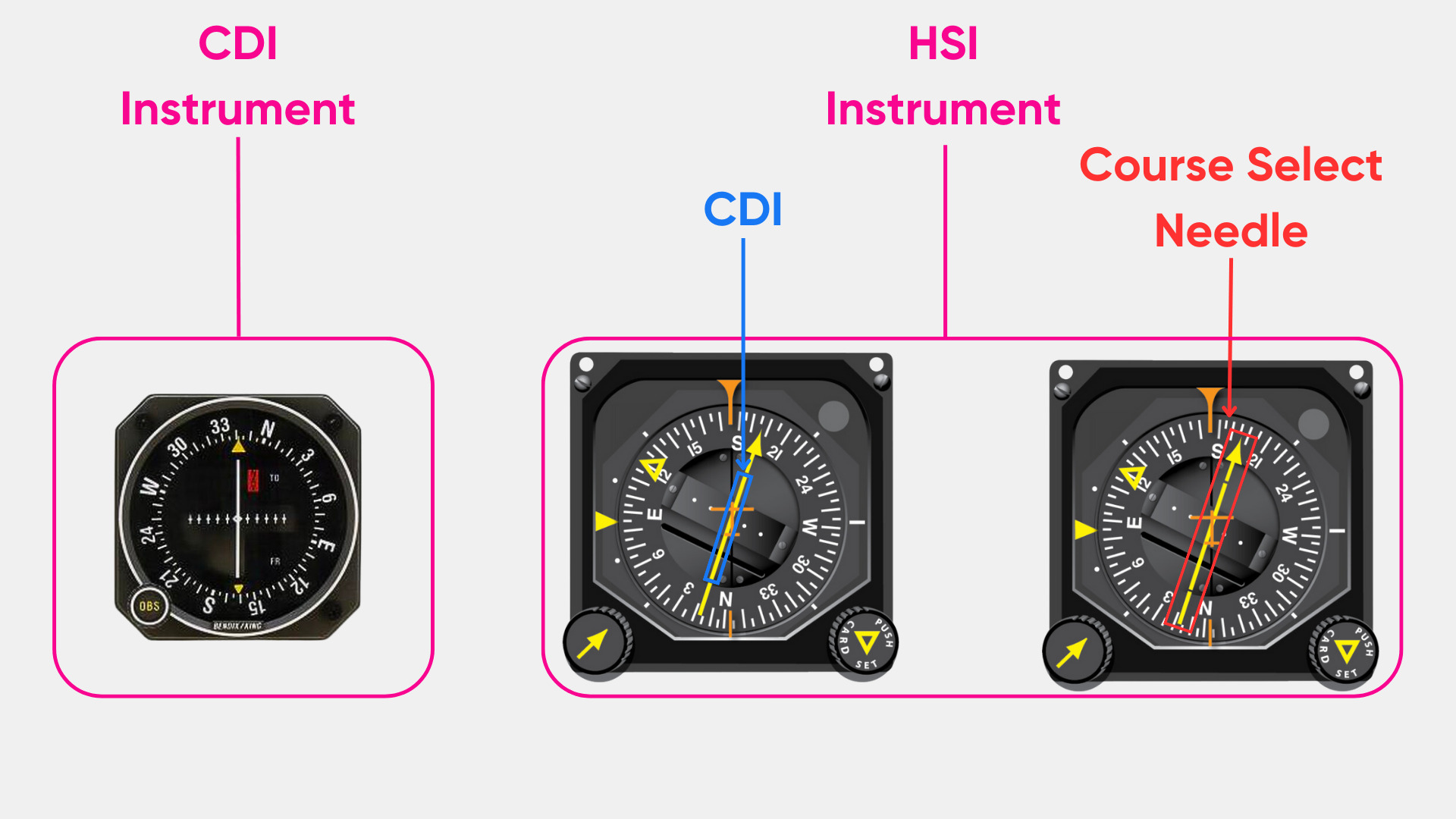A magneto is a reliable piece of equipment that provides electrical power independent of a battery and is used to power the spark plugs inside a piston engine. Two magnetos are found in a piston engine, with each magneto providing electricity for one of the two spark plugs in each cylinder.
How Does a Magneto Work?

A magneto consists of five primary parts:
- An armature: The armature is a “U” shaped iron bar.
- A primary coil: The primary coil refers to thick wire wrapped around one side of the “U” shaped armature approximately 200 times.
- A secondary coil: The secondary coil refers to thick wire wrapped around the other side of the “U” shaped armature approximately 20,000 times.
- A set of breaker points and a capacitor. The capacitor is used to ensure a faster, more predictable collapse of the magnetic field when the breaker points make contact.
- A pair of strong permanent magnets.
The purpose of the magneto is to generate a high voltage pulse of up to 20,000 volts, sufficient to create the spark required by the spark plugs to ignite the fuel inside a piston.
This high voltage pulse is created by using a pair of strong magnets. A magnetic field is induced in the armature when the magnets pass the U-shaped armature (iron bar). As the magnetic field in the armature reaches its maximum capacity, a switch (breaker point) breaks the flow of current through the primary coil and causes a voltage spike of about 200 volts. The secondary coil amplifies this voltage to around 20,000 volts, and this voltage is routed to the spark plug. The spark plug then creates a tiny spark that is sufficient to ignite the fuel inside the piston.
The timing of the magneto is controlled by a cam that is connected to the crankshaft. This cam opens and closes the breaker points as needed.
Advantages of a Magneto
The magneto boasts many advantages when compared to a battery-based ignition system.
The first advantage of a magneto system is its reliability. Because the system is entirely self-contained, it does not rely on any external system such as a battery to function. This makes it perfect for use in aircraft, as an electrical failure will not cause an engine failure. This feature is less critical in a car, for example, where a vehicle can simply come to a stop, but crucial in an aircraft, where an engine failure could cause serious harm.
A magneto, and the modern versions in particular, are very compact and relatively light. The modern magneto is constructed using cobalt steel and nickel aluminum magnet metals that are lighter than traditional iron and steel.
Disadvantages of a Magneto
While the magneto ignition system is undoubtedly useful, it does not come without its disadvantages.
Firstly, battery ignition systems can be used to provide a better spark to the spark plugs when starting the engine. While modern magneto systems compensate for this by using electronic starters or impulse couplings, the magneto itself cannot provide a more efficient voltage to the spark plugs when starting the engine.
Secondly, the magneto is an expensive system and is therefore only used in specific applications, such as aviation, where its reliability and independence of other systems is required.
Another disadvantage is the maintenance required by the magneto system. Because the system is so carefully designed and compact, it is difficult to maintain and often cannot be repaired when damaged.
What Causes a Magneto to Fail?
The magneto is very reliable but, like any system, it can fail.

The most common cause of a magneto failure is due to engine oil or other fluid that manages to enter the magneto. Oil seals can deteriorate with age and cause leakage, which is a common culprit.
Another common magneto issue is when arcing occurs at the breaker points and causes them to erode. This erosion leads to an unstable magnetic field collapse when the breaker points make contact and causes a smaller voltage spike.
Conclusion
Understanding how the magneto system works is crucial to understanding how an aircraft piston engine functions. While the magneto is a critical component, it is only one part of the aircraft’s ignition system and the aircraft’s engine itself. Use your knowledge of the magneto system to learn about the aircraft’s ignition system. Common issues, particularly during start, become significantly easier to diagnose when you understand the aircraft’s ignition system.




